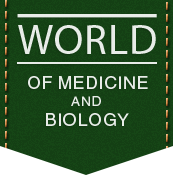| About the author: |
A. M. Hromova, O. L. Hromova, N. I. Mitiunina, V. B. Martynenko, V. M. Shafarchuk, Y. A. Orlova |
| Heading |
CLINICAL MEDICINE |
| Type of article |
Scentific article |
| Annotation |
Implementing the latest technologies and programs aimed at helping the mother and the newborn contributed to the development of both perinatal and preventive obstetrics. The role of preventive obstetrics is aimed at predicting and preventing, if necessary, perinatal consequences. The World Health Organization has developed guidelines for effective perinatal care: evidence-based, demedicalized, technology-based, multidisciplinary, family-centered, and regionalized. In Ukraine, as in the world, among the causes of perinatal mortality, the death of premature children with meagre body weight (up to 70 %) and congenital malformations and anomalies (22–24 %) prevails. Perinatal obstetrics involves the development of a network of perinatal centres and hospitals according to the degree of development, as well as the reorganization and development of neonatal services. There should be provision of intensive therapy, the possibility of raising premature babies, and the availability of highly qualified specialists. Thus, the preventive direction of perinatal obstetrics should be based on deep knowledge of the basics of classical obstetrics during the physiological course of pregnancy and childbirth; limited (prohibitions), aggressive obstetrics with hyperpolarization of obstetric activity, which, as a rule, is based on a misunderstanding (ignorance) of perinatal obstetrics. “Management” of pregnancy and childbirth in case of risk (presence) of diagnosed fetal morbidity, manifestations of intrauterine infection, autoimmune pathology, and pathology of the placental complex in the presence of modern technologies that ensure the development of the newborn. |
| Tags |
perinatology,development of obstetric hospitals,perinatal centers,regionalization,caesarean section |
| Bibliography |
- Ketova OM. Vady rozvytku embrioniv i plodiv: svitovyy dosvid. Ukrainian Journal Health of Woman. 2023. 3(166): 44–49; doi: 10.15574/HW.2023.188.44. [in Ukrainian]
- Tarasenko KV, Hromova AM, Shafarchuk VM, Nesterenko LA. Zrostannya chastoty kesarevoho roztynu yak problema suchasnoho akusherstva. Ukrayinskyy zhurnal medytsyny, biolohiyi ta sportu. 2019. 4. № 5, 197–201; doi: 10.26693/jmbs.04.05.19 [in Ukrainian]
- Atkins B, Kindinger I, Mahindra MP, Moatti Z, Siassakos D. Stillbirth: prevention and supportive bereavement care. BMJ Med. 2023 Jun 27;2(1): e000262 doi: 10.1136/bmjmed-2022-000262
- Hajji AA, Daba M. Prevetning maternal and child mortality: upcoming WHO Resolution must galvanise action to tackle the unacceptable weight of preventable deaths. Lancet Glob Health. 2024 May 20: 2214–109 (24) 00220-1.doi:10.1016/2214–109 (24)00220-1.
- Indications for Outpatient Antenatal Fetal Surveillance: ACOG Committee Opinion, Number 828. Obstet Gynecol. 2021 Jun 1;137(6): 177–197. doi: 10.1097/AOG.0000000000004407.
- Maternal and perinatal death surveillance and response: materials to support implementation. Geneva: World Health Organization; 2021. Licence: CC BY-NC-SA 3.0 IGO vol.48 doi: 10.2471/BLT.22.288703
- Volosovets O, Abaturov А, Beketova G, Zabolotko V, Rudenko N, Kryvopustov S. Birth rate, perinatal mortality and infant mortality in Ukraine: evolution from 1991 to 2021 and current risks. CHILD`S HEALTH, 17(7), 315–325. (2023);doi.10.22141/2224-0551.17.7.2022.1535
- Partnership for Maternal N& CH, Member. 2017 progress on the Every Woman Every Child Global Strategy; 2017. p. 1–79.
- Willcox ML, Okello IA, Maidwell-Smith A, Tura AK, van den Akker T, Knight M. Maternal and perinatal death surveillance and response: a systematic review of qualitative studies. Bull World Health Organ. 2023 Jan 1;101(1):62–75G. doi: 10.2471/BLT.22.288703.
- World Health Organization. Every newborn action plan: country progress tracking report. 2015. 48 doi: 10.1053/j.semperi.2015.06.004.
- World health Organization. Strategies toward ending preventable maternal mortality (EPMM). Geneva: WHO; 2015. p. 1–4. vol. 6736
- World Health Organization. Health in 2015: from MDGs, Millennium Development Goals to SDGs, Sustainable Development Goals, 204. World Health Organization; 2015; 45.
- WHO statement on caesarean section rates. Geneva: World Health Organization; 2015(WHO/RHR/15.02; http://www.who.int/reproductivehealth/publications/ maternal_perinatal_health/cs-statement, accessed 31 May 2018), 53.
|
| Publication of the article |
«World of Medicine and Biology» №2(88), 2024 year, 45-48 pages, index UDK 618.2/5-092 |
| DOI |
10.26724/2079-8334-2024-2-88-45-48 |
